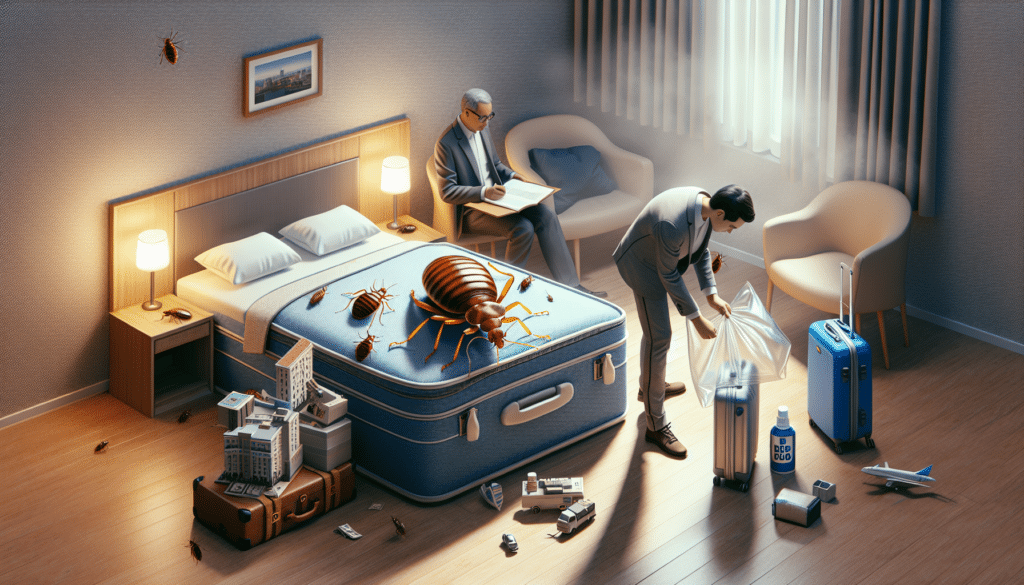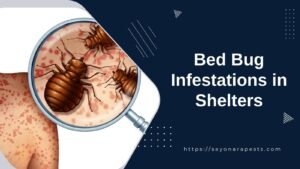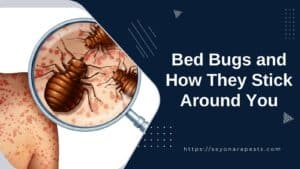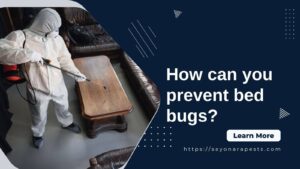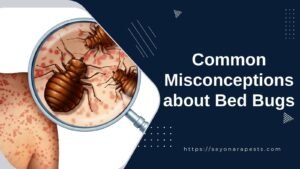Keep Bed Bugs at Bay While Traveling
Traveling should be fun, not a bug-infested nightmare. Here’s how to dodge those pesky bed bugs and keep your trip worry-free.
Smart Hotel Choices
Picking the right hotel can save you from a bed bug disaster. Do your homework before booking:
- Read Reviews: Check what other travelers say about the hotel’s cleanliness and pest control. Sites like Aantex can be helpful.
- Ask Questions: Call the hotel and ask about their pest control measures. A good hotel will have no problem sharing this info.
- Look for Cleanliness: Hotels with high cleanliness ratings are less likely to have bed bugs.
Room Inspection 101
Once you check in, don’t just flop on the bed. Spend a few minutes inspecting your room. Here’s what to look for:
- Live Bugs: Bed bugs are tiny, brown, and flat. They love hiding in mattress seams and cushions.
- Shed Skins: As they grow, bed bugs shed their skins. Finding these is a red flag.
- Fecal Spots: Small black or rusty spots on bedding or furniture are a telltale sign.
Focus your inspection on these hotspots:
- Mattress and Box Spring: Check the seams and corners.
- Bed Frame and Headboard: Look closely at any cracks or crevices.
- Furniture: Inspect upholstered chairs and couches.
- Curtains and Drapes: Bed bugs can hide in the folds.
- Carpet Edges and Baseboards: These are common hiding spots.
If you spot any signs of bed bugs, alert the hotel staff immediately. Ask for a different room or consider moving to another hotel. For more tips, check out our guide on how to check for bed bugs in hotel rooms.
By being smart about where you stay and taking a few minutes to inspect your room, you can avoid bed bugs and enjoy your trip without any unwanted guests.
Precautions During and After Travel
Nobody wants to bring bed bugs home as a souvenir. Taking a few simple steps while traveling and after you get back can help keep these pesky critters at bay. Sealing your luggage and properly laundering your clothes are key moves to avoid an unwanted infestation.
Sealing Luggage
Keep your luggage sealed tight to fend off bed bugs. Use plastic bags or bed bug-proof luggage protectors. Wrapping your luggage in plastic bags can seriously cut down the chances of bed bugs hitching a ride.
When you’re staying in a hotel or any other place, don’t leave your luggage on the bed or any upholstered furniture. Bed bugs love those spots. Instead, put your suitcase on a luggage rack, in the bathroom, or on a hard surface away from where bed bugs might be hiding.
If you do run into bed bugs while traveling, sealing your stuff in plastic bags can stop them from spreading. Keep those items sealed until you can deal with them properly. Experts say this is a crucial step in containing the pests.
Laundering Clothes
Once you’re back home, whether you saw bed bugs or not, it’s laundry time. Michigan State University Extension says to wash and dry your clothes on high heat right away. Heat is a surefire way to kill bed bugs. Dry your clothes on medium to high heat for at least 30 minutes to make sure any sneaky bugs are dead.
When unpacking, do it on a hard surface under bright light so you can spot any signs of bed bugs. Clothes that can’t be washed can go in the dryer on medium to high heat for the same amount of time.
For dry-clean-only items, put them in sealed plastic bags and let the dry cleaner know about the possible bed bugs. This helps prevent spreading them to other people’s clothes. Check your luggage too. Vacuum it thoroughly and wash it with hot soapy water or household cleaners to make sure no bed bugs are left behind.
If, despite your best efforts, you bring bed bugs home, CNN Travel suggests washing your clothes and giving them an extra-long dry cycle to kill the pests. You might also need to expose your suitcase to heat. If you can’t get it hot enough to kill the bed bugs, you might have to toss the suitcase.
By following these tips and staying alert during and after your trip, you can greatly reduce the risk of a bed bug invasion. For more info on dealing with these pests, check out our articles on using steam to kill bed bugs and using diatomaceous earth to kill bed bugs.
Spotting and Tackling Bed Bugs
Catching bed bugs early can save you a ton of hassle and itchy nights. Here’s how to spot these pesky critters and what to do if you find them.
Spotting the Little Buggers
When you’re traveling, keep an eye out for signs of bed bugs in your room. Look for rusty or reddish stains on sheets or mattresses, dark spots of bed bug poop, and tiny eggs or eggshells. You might also see their shed skins or catch a whiff of a sweet, musty smell if there’s a big infestation.
Other signs include:
- Live bed bugs
- Shed skins
- Fecal spots
For a step-by-step guide on checking for bed bugs in hotel rooms, check out how to check for bed bugs in hotel rooms.
What to Do Right Away
If you find bed bugs, act fast to stop them from spreading:
- Tell hotel management right away and ask for a different room.
- Avoid rooms next to, above, or below the infested one.
- Wash all your clothes in hot water and dry them on high heat to kill any bugs.
If you think bed bugs might have hitched a ride home with you:
- Wash your clothes thoroughly and use a long dry cycle.
- Expose your suitcase to high heat to kill any hidden bugs. If you can’t do that, consider getting a new suitcase to avoid bringing bugs into your home.
For more tips on preventing bed bugs when traveling, including heat treatments like killing bed bugs with heat and using steam to kill bed bugs, check out our resource pages. You might also find natural remedies for killing bed bugs helpful.
If bed bugs do make it into your home, consider professional extermination methods like professional bed bug treatment options and effective bed bug extermination methods for a thorough fix.
Get to Know Your Bed Bug Enemies
Knowing how bed bugs behave is key to keeping them out of your life, especially when you’re on the go. By understanding how they reproduce and move around, you can stay one step ahead and avoid bringing these tiny hitchhikers home.
Bed Bug Baby Boom
Bed bugs breed like there’s no tomorrow. A single female can lay five to seven eggs a week, and over her lifetime, she can pop out more than 250 eggs. Those eggs hatch in about 10 days, and the baby bugs (nymphs) take two to four months to grow up and start the cycle all over again.
Why should you care? Because if you don’t catch them early, you’ll soon have a full-blown infestation on your hands. Early detection and quick action are your best friends here.
Bed Bug Travel Tricks
Bed bugs can’t fly, but they sure can move. They scurry over floors, walls, and ceilings like tiny marathon runners. They usually hang out within eight feet of where people sleep, but they can be found anywhere. These sneaky critters love to hitch rides on your stuff—think luggage, clothes, and secondhand furniture.
Here’s where they like to hide:
- Luggage and suitcases
- Purses
- Gym bags
- Anything you keep near your bed
Once they latch onto your belongings, they can easily make their way into your home, apartment, or hotel room. They thrive in all sorts of places—offices, stores, hotels, gyms—and once they’re in, getting rid of them without professional help can be a nightmare.
Knowing how bed bugs operate can help you protect your stuff when you travel and lower the chances of bringing them back with you. For more tips on dealing with these pests, check out our guides on ways to kill bed bugs, professional bed bug treatment options, and detecting signs of bed bug infestations.
Get Professional Help
Bed bugs are a nightmare. These tiny pests are tough to get rid of and love to hide. That’s why calling in the pros can be a game-changer. Let’s talk about why pest control experts are your best bet and what they do during their inspections.
Pest Control Experts
These folks know their stuff. If you think you might have picked up bed bugs while traveling, don’t wait. Call a trusted company like Orkin for a thorough bed bug check. They’ll figure out how bad the problem is and get to work fixing it. Bed bugs are sneaky and hard to deal with on your own, so getting help right away is super important.
Here’s what pest control experts usually offer:
- Detailed checks of all the places bed bugs might hide
- Finding out if bed bugs are there and how many
- Custom treatment plans, which could include heat treatment, insecticides, or steam treatments
- Follow-up visits to make sure the bugs are gone
- Tips for keeping bed bugs from spreading
Thorough Inspections
The first step in beating bed bugs is a detailed inspection by a pro. They’ll check all the spots where bed bugs like to hide, like behind headboards and in furniture seams. The American Hotel & Lodging Association says hotels should regularly check their rooms and train staff to spot bed bugs early.
Travelers should also be on the lookout. Check your hotel room for signs of bed bugs. If you see anything suspicious, tell the hotel staff right away and ask for a different room or even move to another hotel.
Here’s what a professional inspection includes:
- A visual check of all possible hiding spots
- Using tools like bed bug-sniffing dogs or infrared cameras for better detection
- A detailed report of what they find and what to do next
By getting help from pest control experts and making sure inspections are thorough, you can tackle bed bug problems head-on. Whether you’re a homeowner, hotel manager, or renter, quick action and professional help are key to keeping these pests at bay. For more tips on getting rid of bed bugs, check out our guide on effective bed bug extermination methods.
Keep Bed Bugs Out: Tips and Tricks
After a trip, it’s super important to stay on guard against bed bugs. These little pests can sneak into your home and make life miserable. But don’t worry, a few smart moves can keep them at bay.
Spotting the Sneaky Critters
Regular checks for bed bugs can save you a lot of trouble. Look for live bugs, shed skins, and tiny dark spots (their poop). This is especially crucial after staying in hotels or other places where bed bugs might hitch a ride in your luggage or clothes. Give your stuff and sleeping areas a good once-over when you get back. For tips on checking hotel rooms, see how to check for bed bugs in hotel rooms.
Here’s what to watch for:
- Live bugs: Small, brownish critters about the size of an apple seed.
- Shed skins: Clear, empty shells left behind after they molt.
- Fecal spots: Tiny, dark spots that might smear like ink on fabric.
If you spot any of these signs, act fast. Bed bugs can come from lots of places, not just hotels, so stay sharp and informed.
Getting Rid of Bed Bugs
If you find bed bugs, don’t panic. There are several ways to tackle them:
- Heat Treatment: Bed bugs hate the heat. Wash your clothes at 120°F or higher to kill them. For items you can’t wash, use a commercial heat box or a home dryer (killing bed bugs with heat).
- Freezing: Cold can also do the trick. Put infested items in a freezer set to 0°F for at least four days (freezing to kill bed bugs).
- Diatomaceous Earth: This natural powder dehydrates and kills bed bugs. Sprinkle it around areas where you suspect bed bugs are hiding.
- Steam Treatment: High-temperature steam can kill bed bugs on mattresses, furniture, and other hiding spots.
- Vacuuming: Regular vacuuming can suck up bed bugs and their eggs from carpets, floors, and furniture.
- Insecticides: There are chemicals designed to kill bed bugs. Use them carefully and follow the instructions to avoid harm.
- Professional Help: If the infestation is too big to handle, call in the pros. They can do a thorough job of getting rid of bed bugs (professional bed bug treatment options).
Prevention is always better than dealing with an infestation. Inspect and clean your luggage, and act quickly if you find any signs of bed bugs. Stay informed about ways to kill bed bugs and keep your home bed bug-free.

